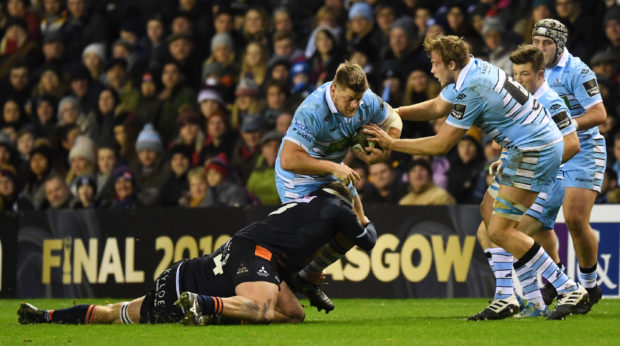Scotland’s international rugby squad is “a diverse group and they’re all very keen to wear that thistle and play for their country”, said Gregor Townsend yesterday.
The addition of two more South African-born players to the 40-strong squad for the six-match autumn series brings the number of players not developed in Scotland to 18, about par for the course in recent times – half the last Rugby World Cup squad learned their rugby outwith Scotland.
There are still some who bristle at this, and indeed many scornful. A number are foreign commentators who handily overlook the heritage of Fijian and Tongans playing for England, Englishmen playing for Wales, and South Africans and New Zealanders playing for Ireland in equal numbers. Their one-eyed “Kilted Kiwi” and “Mock Jock” jibes can be safely ignored for the trolling they are.
But some disquiet comes from Scots, who question the validity of players like Duhan van der Merwe and Oli Kebble, included in this squad, possibly at the expense of native Scottish talent.
They have a point in some respects. There’s no doubt Scotland have played the residency rules as enthusiastically as any other major rugby nation with the exception of Australia.
In the past some have crept through who definitely weren’t worth the “project” tag they were given, but that can’t be said of van der Merwe and Kebble.
Kebble – along with Pierre Schoeman at Edinburgh – was identified to fill a problem position for Scotland. It’s actually since been filled by native Rory Sutherland, who is going to be first choice whatever happens.
The same thing happened at tight-head – WP Nel was a quality project who filled a gap in a position that was short, but now manfully filled by Zander Fagerson.
Van der Merwe is different still, because he was so raw and unfinished when he came to Edinburgh. Three years under the tutelage of Richard Cockerill, Duncan Hodge and Calum MacRae have made him a rounded rugby player as well as a prime physical specimen.
And in any case, he’s got a fight for his position with two natives, Darcy Graham and Blair Kinghorn. The fourth man in the wing mix, Sean Maitland, was another of those “gap-fillers” until Graham and Kinghorn were ready.
Scotland’s player resource is scant compared to other nations. We do produce talent – the Grays, the Fagersons, Jamie Ritchie, Graham, Kinghorn, Hogg and Russell are fine recent examples – just not to cover every eventuality immediately.
The residency rules have been fully exploited by other countries with plentiful resources at their disposal. It would be plain daft for a country with limited resources like Scotland not to follow suit.
